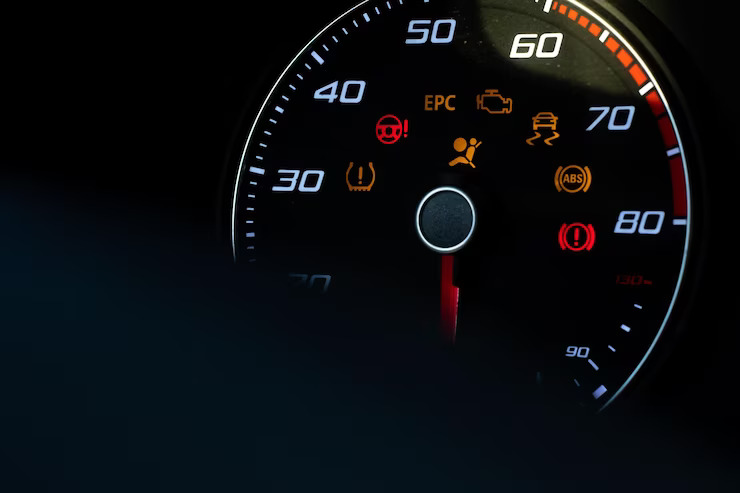Maintaining proper tire pressure is essential for vehicle safety, fuel efficiency, and overall tire performance. To assist drivers in monitoring tire pressure, modern vehicles are equipped with Tire Pressure Monitoring System (TPMS) sensors. These sensors continuously monitor tire pressure and, when an issue is detected, illuminate the TPMS warning light on the dashboard. In this article, we will discuss the importance of TPMS warning lights and provide troubleshooting tips to address common issues.
Understanding TPMS Warning Lights:
The TPMS warning light is typically represented by an exclamation mark inside a tire-shaped symbol or a similar icon. When the light illuminates on the dashboard, it indicates a problem with tire pressure. The appearance and color of the warning light may vary depending on the vehicle manufacturer, but it is usually yellow or orange.
Importance of TPMS Warning Lights:
- Safety: Adequate tire pressure is vital for safe driving. Underinflated tires can lead to reduced traction, decreased handling, longer braking distances, and an increased risk of blowouts or tire failure. The TPMS warning light helps drivers identify and address low tire pressure promptly, ensuring safer driving conditions.
- Fuel Efficiency: Properly inflated tires contribute to improved fuel efficiency. Underinflated tires increase rolling resistance, causing the engine to work harder and consume more fuel. The TPMS warning light alerts drivers to low tire pressure, allowing them to take corrective action and maintain optimal fuel economy.
- Tire Performance and Lifespan: Incorrect tire pressure can negatively affect tire wear patterns and overall performance. Overinflated tires can lead to uneven tread wear in the center, while underinflated tires cause excessive wear on the sides. By addressing low tire pressure indicated by the TPMS warning light, drivers can extend tire lifespan and ensure even wear for better performance.
Troubleshooting TPMS Warning Light Issues:
- Check Tire Pressure: When the TPMS warning light illuminates, it is crucial to check the tire pressure of all tires, including the spare (if applicable). Use a reliable tire pressure gauge to measure the pressure and compare it to the recommended levels specified in the vehicle’s owner’s manual or on a sticker located on the driver’s side door jamb. Adjust the tire pressure as needed to meet the manufacturer’s recommendations.
- Inspect for Tire Damage: Inspect the tires visually for signs of punctures, cuts, bulges, or any other visible damage. If you notice any tire damage, it is recommended to have it inspected and repaired by a professional technician.
- Check Valve Stems: Ensure that the valve stems on all tires are intact and not damaged or leaking. Faulty valve stems can lead to pressure loss and trigger the TPMS warning light. If a damaged valve stem is identified, it should be replaced.
- Sensor Battery Replacement: TPMS sensors are battery-powered, and over time, the batteries may require replacement. If the TPMS warning light persists despite correct tire pressure, it is possible that one or more sensor batteries are depleted. Consult a qualified technician to replace the sensor batteries as necessary.
- Sensor Re-Calibration: In some cases, the TPMS sensors may require re-calibration or resetting. This may be necessary after tire rotations, tire replacements, or repairs. Consult the vehicle’s owner’s manual or seek professional assistance to perform the sensor re-calibration procedure.
- Faulty TPMS Sensors: If all tires are properly inflated, valve stems are intact, and the warning light continues to illuminate, it is possible that one or more TPMS sensors are faulty. A professional technician with specialized TPMS diagnostic tools can identify the faulty sensor(s) and replace them accordingly.
TPMS warning lights play a crucial role in maintaining vehicle safety, fuel efficiency, and tire performance. When the TPMS warning light illuminates, it indicates low tire pressure, and prompt action is necessary. By troubleshooting common issues such as checking tire pressure, inspecting for tire damage, examining valve stems, replacing sensor batteries, performing sensor re-calibration, or addressing faulty sensors, drivers can ensure proper tire pressure and enjoy a safer and more efficient driving experience. Regularly monitoring tire pressure and responding to TPMS warning lights will help extend tire lifespan, improve fuel economy, and enhance overall vehicle performance.











